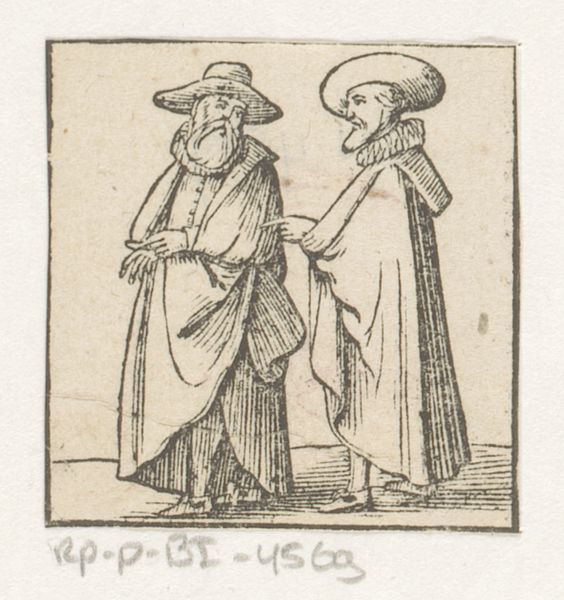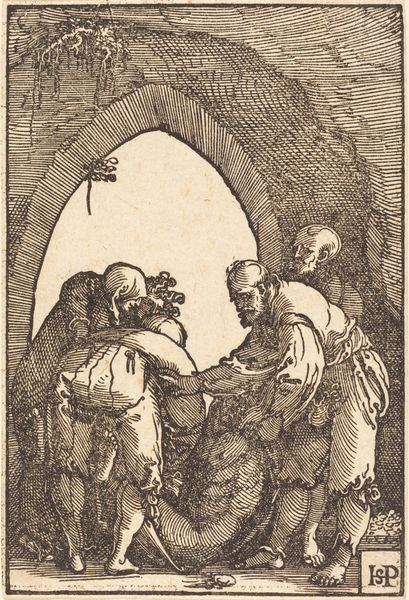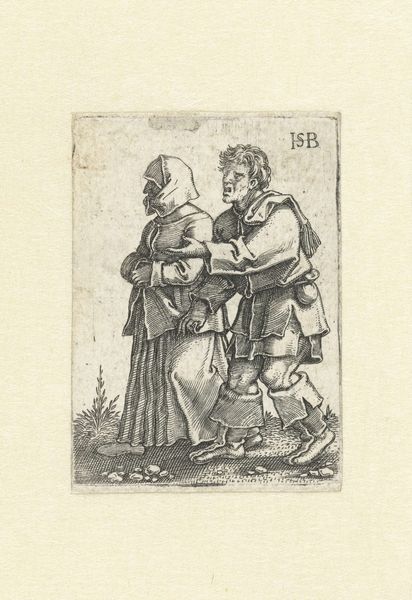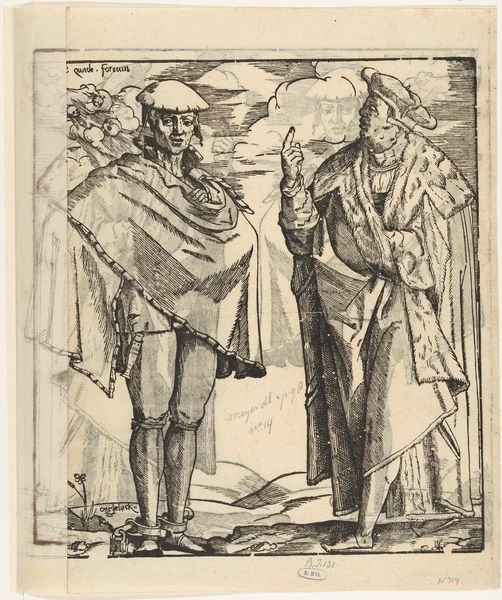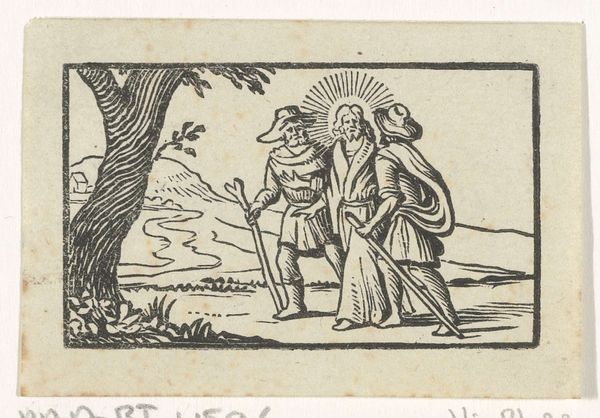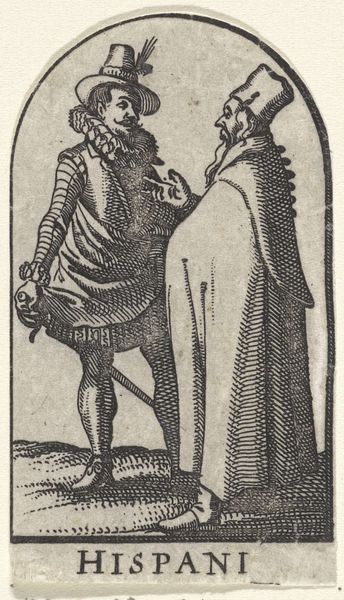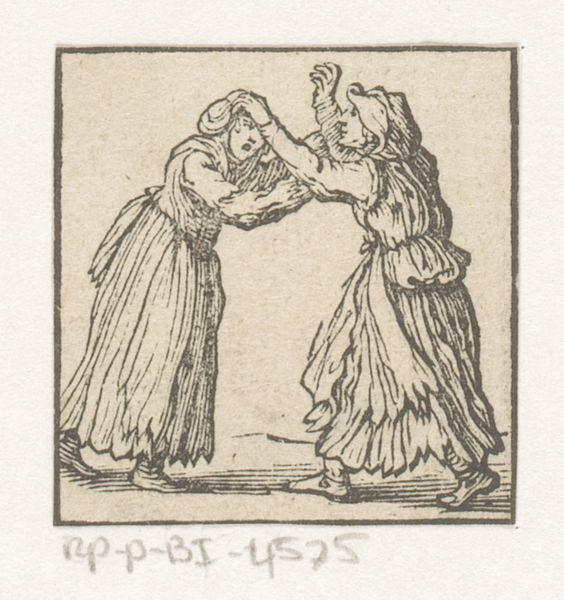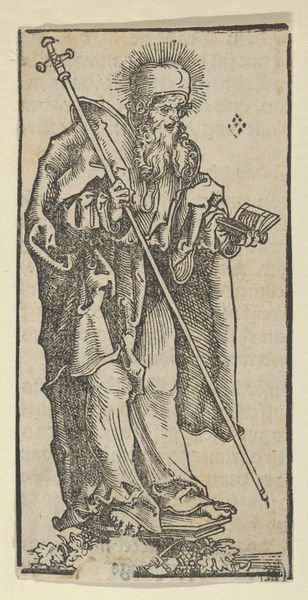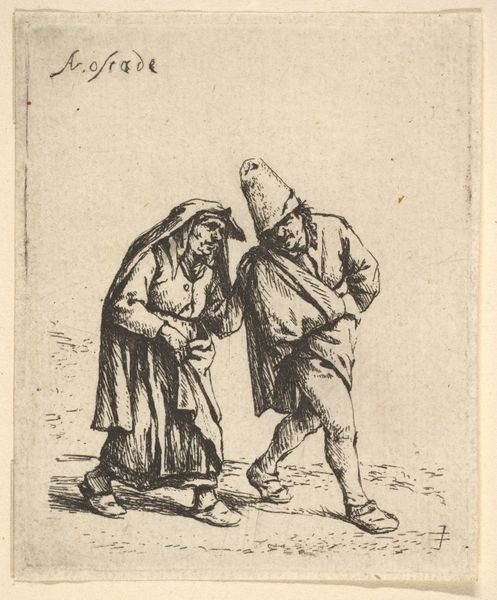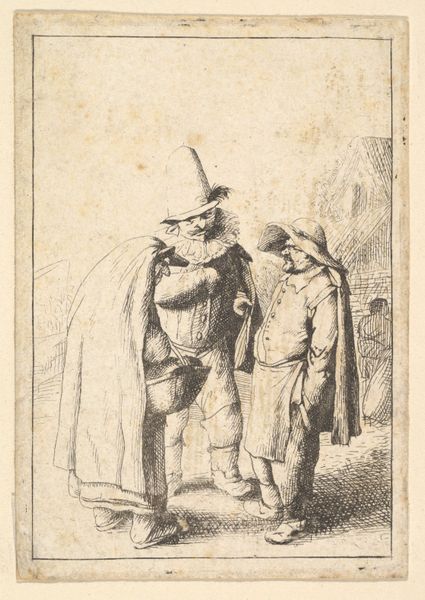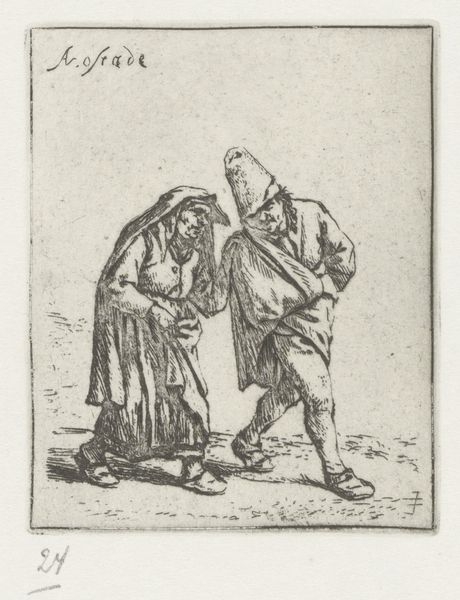
#
comic strip sketch
#
pen sketch
#
personal sketchbook
#
idea generation sketch
#
sketchwork
#
pen-ink sketch
#
pen work
#
sketchbook drawing
#
storyboard and sketchbook work
#
sketchbook art
Dimensions: height 41 mm, width 39 mm
Copyright: Rijks Museum: Open Domain
Curator: What strikes me immediately about this little ink sketch is the… choreography of human experience. The pleasure seeker guzzling with abandon, the other, weathered and supported, walking beside him in weary contemplation. It’s called "Pilgrim with a Wooden Leg and Crutches Watches a Drinking Man" – isn’t that title a tiny, brilliant poem in itself? Anonymous, seventeenth century. Editor: Absolutely, I am thinking a great deal about care, dependency, and late-stage capitalism. There’s something profoundly unsettling in its simplicity – it captures a really raw dynamic of privilege and suffering. This drinking man can obviously take his time drinking his drink. How might a culture support its citizens who need help and care? I am also concerned with accessibility here. Curator: "Profoundly unsettling" - yes, exactly! It reminds me of those old morality plays, you know? One character embodies earthly delights, while the other has experienced hardships and is learning something, perhaps, profound on a different level. He becomes the moral anchor for us, the viewers, despite his fragility. Is the contrast stark, or what? Editor: Stark indeed! This visual juxtaposition pushes me to question who gets to enjoy leisure. The pilgrim with his wooden leg becomes a potent symbol of forced immobility. But even the drinking man's pleasure, as you said, feels a bit off... like he's drinking *for* the other one, or to forget the precarity surrounding him. How do we frame care for people as the most valuable contribution a person can make, no matter their level of wealth or their capacity? Curator: I love that interpretation—drinking "for" the other one. Perhaps he drinks to stave off any empathy, because truly understanding the pilgrim's path is a hard row to hoe! And his physical state makes this care work even more challenging to discuss, especially if he also can’t perform productivity or the types of tasks deemed acceptable by the economy and systems that shape the era. This scene of one man taking simple pleasure in his own life beside one rendered incapable of doing the same also strikes me as a powerful depiction of contemporary political, socioeconomic, and climate despair. I almost wish I were sipping that tankard along with the nonchalant guy in this scenario, if only for the opportunity to take my mind off this for even a split second! Editor: It resonates powerfully in a lot of different eras, especially in eras defined by class or gender inequity, lack of care, war, and environmental damage, because of its stripped-down quality: here are the consequences, literally standing or teetering next to each other, without resolution or answers. And even still, he drinks without so much as a nod in the weary pilgrim’s direction. He may have been a pilgrim who met similar circumstances in the past; you just never know what the future will hold. What a bleak scene this work communicates to us. It seems both beautiful and cautionary, and speaks in quiet volume. Curator: Yes, bleak! Perhaps that’s its peculiar beauty then – unflinching observation, not judgment, just an offering of what is.
Comments
No comments
Be the first to comment and join the conversation on the ultimate creative platform.

